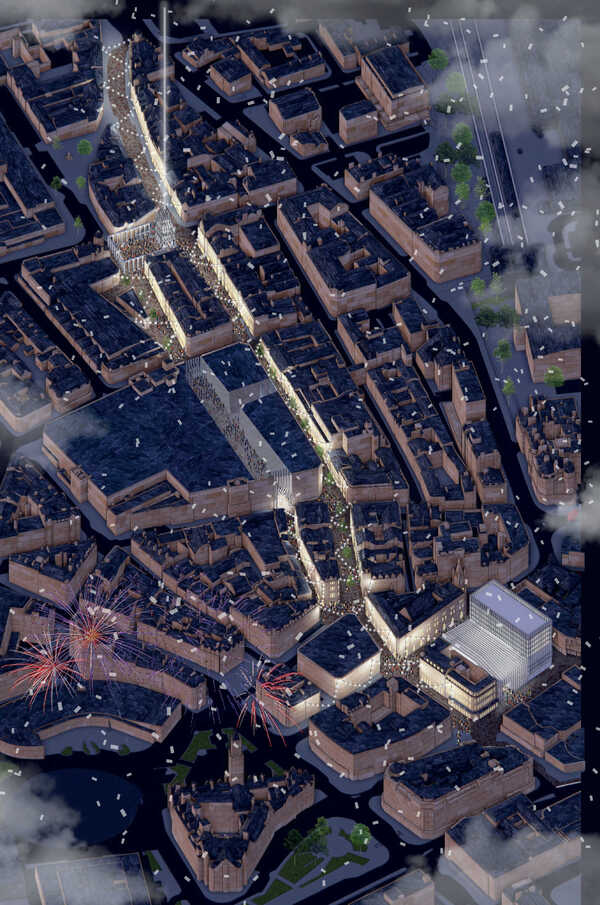The Corridor of Lost Artefacts
Festival of St. Blaise
This thesis establishes a newfound importance to the uncovered urban spine within Bradford. Large, modern developments have replaced a series of historic buildings situated upon geographically important locations along this “corridor”. This creates a contemporary disconnect between the top of town area of Bradford, and the bottom “bowl” area of the city which is densely populated by listed buildings of high civic importance such as the Wool Exchange. Through a programme orientated around a procession for St Blaise Festival, temporary and permanent interventions activate the lost artefact sites of Christ Church, Kirkgate Market, and the Swan Arcade.
We emphasised model making during the design process, to represent final proposals and explore, test and critique ideas. Model making enabled a playful expression of materiality and light which became a consistent design intent across the different interventions, adding drama to evening, on approach views. The Rawson square tower proposal examined the possibilities of permanent and temporary interventions, changing the meaning and spatial quality of the site. The form and articulation of these interventions were informed by buildings that formerly occupied the square (Primarily Christ Church), abstractly reflecting the square’s past.
Testing the form and façade articulation of the new ‘Hall of Festivity’ building located at the lost Swan Arcade site was also greatly enhanced through a similar process. We expressed continuity with the linear gridded façade of the Arcade’s contemporary replacement, Arndale Tower. This tower is incorporated within the new scheme, with the connecting raised form of the auditorium providing circulation through the site from the Wool Exchange, a once prominent feature of the old Arcade.
The new Kirkgate passage establishes the vertical axis of the scheme within the city, connecting the two new sites of gathering. A contemporary interpretation of the historic Kirkgate Market entrances, shares a similar architectural expression to the new Hall of Festivity building, reopening important historic routes within the city such as Queensgate that are lost in the contemporary urban fabric.


